2021 is the year that put short interest on everyone’s radar.
As I’ve been warning for MONTHS, shorting is a very dangerous game … especially with the current market.
With record numbers of new traders embracing a herd mentality, stocks have been going up…
And random short squeezes were blowing up accounts WAY before GameStop (NYSE: GME).
You gotta love this giant short squeeze on $SIGL as this is EXACTLY why I haven’t short sold ANY play the past few months, it’s just not worth the risk…& dip buying this clear bouncing ball pattern just made several of my top https://t.co/EcfUM6l2S3 students some solid profits! pic.twitter.com/Jw2HO5zpi2
— Timothy Sykes (@timothysykes) January 11, 2021
GameStop’s short interest soared close to 140% of the public float before the Reddit crowd went in…
If you’re thinking … How could they short more shares than are available? … That’s a good question.
Insane amounts of volume started pouring in. These shorts couldn’t cover their positions. They were so sure that GameStop would crash that they got sloppy.
They believed in their idea and ignored what the market was telling them. And that’s why they blew up … or got bailed out by other hedge funds, anyway.
You have to guard against this kind of rigidity as a small account trader. Hedge funds don’t care — they’re only losing other people’s money. The traders there will even keep their jobs if they can blame what they lost on a meme.
But you probably don’t have that luxury. That’s why I teach safety first in my Trading Challenge. My students know that their number one goal is to protect their accounts.
I want you to think like a retired trader. A trade has to be SO good, you’d feel guilty for missing it. Plus, most retirement accounts aren’t even able to short stocks!
The first step to surviving the trading battlefield is to work on your education. That’s what you’re doing right now.
Table of Contents
- 1 What Is Short Interest?
- 2 How to Use Short Interest (Examples)
- 3 Advantages and Limitations of Using Short Interest
- 4 How to Find Short Interest
- 5 Short Interest Reporting Dates (2021)
- 6 What Does Short Interest Percentage Mean?
- 7 2 Stocks with High Short Interest
- 8 Frequently Asked Questions About Short Interest
- 9 Short Interest: The Bottom Line
What Is Short Interest?
Short interest shows you how much of a stock’s public float is currently sold short. It’s also called the short float. The shorts who make up this number haven’t yet covered their positions.
They’re either losing money … or they think the stock will go even lower.
A lot of these shorts have the same mentality as investors. The big difference is that they think the stock is worth less than its current price.
This is what happened with GameStop’s (NYSE: GME) short interest. The institutional investors shorting it were convinced it was the next Blockbuster — a dying mall store in a dying business.
They might ultimately be right. That didn’t stop Reddit forum WallStreetBets from targeting the market’s most shorted stock.
Instead of high short interest being a bearish sign, these traders think of it as an opportunity. They’re not going to hold onto it for 20 years. What do they care if all video games are on the cloud by then?
These ‘short hunters’ are mostly short-term traders. Some bought and sold their shares in minutes. Others rode the squeeze as it sent GME parabolic.
Others were just in it for the loss porn memes.
These memes about the short squeezes on $GME $AMC are getting better daily, who would’ve thought the #RedditArmy of #wallstreetsbets could take down #CitronResearch & some of the biggest short selling #HedgeFunds in the world…BIG PROPS to everyone here! #EatTheRich #HoldTheLine pic.twitter.com/6yIj9uZEsb
— Timothy Sykes (@timothysykes) January 30, 2021
How to Use Short Interest (Examples)
Overconfident shorts didn’t only get blown out of GME. Short interest in AMC and other stocks was also targeted by WallStreetBets traders. These short bets backfired as the volume poured in.
Some of these traders just got lucky. But they were using a strategy I teach my Trading Challenge students, whether they knew it or not.
The market is a game of supply and demand. When there’s high short interest in a stock, it’s a bet on the supply side of the equation…
But it carries the potential to switch to demand.
This is what happens in a short squeeze. When stocks trend higher, shorts will try to cover their positions.
It’s always a good idea to cut losses quickly. That’s an even smarter rule for short sellers caught in a squeeze.
Some traders made money riding this short squeeze. And some traders lost when the stock whipsawed around.
That kind of gambling isn’t what I teach my students.
Trading the GME Short Squeeze
The first time it went parabolic, GME squeezed all the way up to $483.
If they missed it breaking out, my students knew not to chase. Instead, they waited for the inevitable panic…
Please congratulate challenge students turned masters @Jackaroo_Trades @traderkylec @RoyhdeVries on their PERFECT $GME dip buys/bounce just now, Jackaroo: ALL OUT +$103k! kylecw2: +$34k LFG, royhdevries: all out $GME +$72K, that was a classic #5 pattern from my 7-step framework!
— Timothy Sykes (@timothysykes) March 10, 2021
It has been a long time since GME was a penny stock. But it was still acting like one.
My top students saw this. They’d put in the screen time. They’d learned the patterns so well that they could scale up…
This led to some of their best trades ever.*
Some of these trades used patterns from my ”Pennystocking Framework” DVD. I recorded it 10 years ago, but the patterns haven’t changed.
It’s included as a bonus in my 30-Day Bootcamp. The 30 video training sessions will help you get up to speed on the techniques I teach — fast.
Millionaire trader Jack Kellogg used step #5 from my framework to dip buy an intraday panic for $107,000* … Then he used step #6 — ‘The Dead Pump Bounce’ — for a $100,000 profit.*
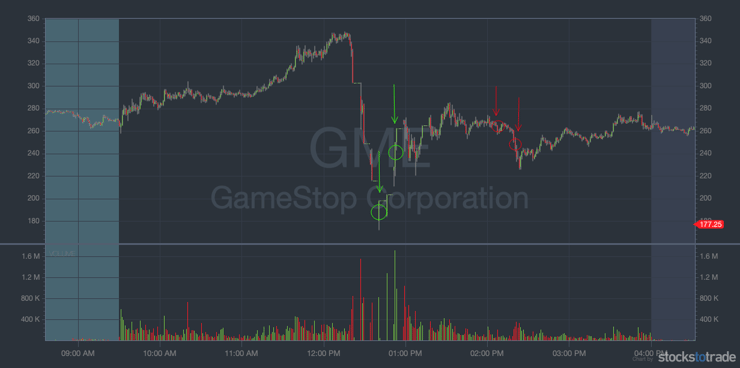
The green arrows and circles show the step #5 pattern he used. The red arrows and circles highlight step #6.
Millionaire trader Kyle Williams runs StocksToTrade alert service Breakouts & Breakdowns along with Jack.**
He alerted the step #5 pattern to the chat room…
Even as he traded it for a total of $34,000.*
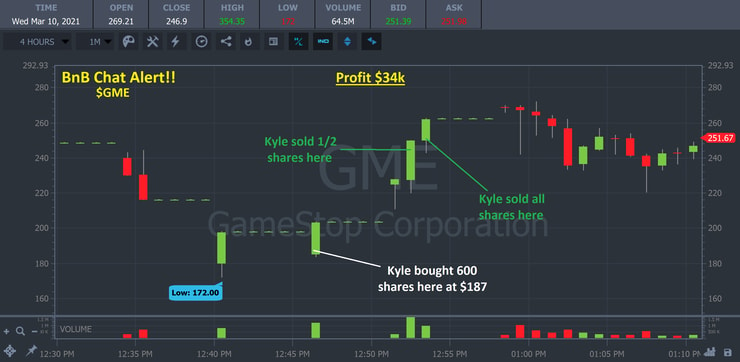
Trading Challenge
You’ve got to remember that short interest should only be one part of your trading strategy.
Even the highest short interest stocks aren’t guaranteed to squeeze. Short interest can have a place in your trading plan…
But you have to listen to what the market is telling you.
That’s what I teach my students. Short interest is only one of the indicators I look for in a trade.
Want to know what else I’m looking for? It’s no big secret. Here’s my Sykes Sliding Scale:
- P is for pattern/price.
- R is for risk/reward.
- E is for ease of entry and exit.
- P is for past performance/history.
- A is for at what time of day?
- R is for reason/catalyst.
- E is for the market environment.
None of these elements will push me into a trade. But all of them can tell me something valuable.
This is the kind of big picture approach I teach in the Trading Challenge. I want my students to know EVERYTHING they can about the market. One false move and you can blow up your account.
It’s not about making money fast. It’s about building your knowledge account and getting in screen time. There are no shortcuts to becoming a self-sufficient trader.
If you think you’ve got what it takes for my Trading Challenge, apply here.
Advantages and Limitations of Using Short Interest

©
The thing about short sellers is sometimes they’re right.
There’s such a thing as a long squeeze. It’s the opposite of a short squeeze…
Which might come as a surprise to traders who think stocks only go up.
Most of the time, short interest doesn’t translate into dramatic moves. Shorting a stock is the other side of taking a long position. It’s just one part of a functioning market.
How to Find Short Interest
Short interest should be one of the metrics your trading platform measures … alongside more important things!
I use StocksToTrade for all of my stock screens.*** It comes pre-loaded with stock screeners designed by traders like me … and there are a ton of tweaks to build in yourself.
It has awesome charting capabilities that show a stock’s patterns as they develop.
Its news scanner is one of my favorite parts. It pulls info from earnings reports, breaking news, and tweets. In the ‘before times,’ I had to go to 20 different sites to get all the information it gives me!
You can customize your StocksToTrade experience with add-on alerts services like Breakouts & Breakdowns.**
You should never copy any trades you get from alerts. But they can still help you enormously. Every trading day you’ll get to see how top traders build their accounts.
StocksToTrade is much more than a short interest tracker. It will help you, no matter what your needs are.
Click here to get 14 days of clean charts and powerful scans for only $7!
Short Interest Reporting Dates (2021)
Short interest is reported to FINRA twice a month, at the middle and end of the month.
There’s an almost two-week gap between the settlement date and the exchange receipt date. Independent short reports add trading pool surveys to the FINRA numbers.
What Does Short Interest Percentage Mean?
Short interest percentage is just a different way of referring to short interest.
The short interest ratio is important. This is also called days to cover. It’s the average number of days it takes for shorts to cover their position in a stock.
You get this ratio by taking the shares shorted and dividing that number by the stock’s average daily volume.
This is another thing to look at when weighing the potential of a short squeeze. The higher the short interest ratio is, the greater the potential for a short squeeze.
More Breaking News
- Marathon Digital Holdings: Is the Recent Crypto Dip a Buying Opportunity?
- CleanSpark Stock on the Rise: Is Now the Perfect Time to Buy?
- Denison Mines Corp Stock: Is It On The Edge Of A Boom Or A Bust?
What Is a Good Short Interest Ratio?
This is a tough question to give a straight answer to.
A high short interest ratio could help to squeeze a stock…
It could be a sign of that common flaw of so many shorts, arrogance.
But it could also be a sign that the stock is in trouble. Shorts only stay in their position if they think they can get a better price down the road.
2 Stocks with High Short Interest
Near the top of the short interest charts are two stocks I’ve traded in the past.
https://t.co/yULyPRB3Re $2,210 profit $BLNK See my track record, daily watch lists & realtime alerts: https://t.co/4q52yIh8LU
— Timothy Sykes (@timothysykes) December 11, 2020
The market is betting against them BIG TIME. A lot of traders think they’re overvalued.
I can’t argue with that. But I think it’s the wrong way to think about these stocks.
They’re in a hot sector, and they’ve shown they can run on news. They’re just one buying frenzy away from squeezing.
Blink Charging Co (NASDAQ: BLNK)
I spotlighted this stock last August. It’s had a hell of a ride since.
Investors think it’s mostly buzz. That might be true, but I’ll be watching the next time the sector heats up.
Its short interest hovers at 38%.
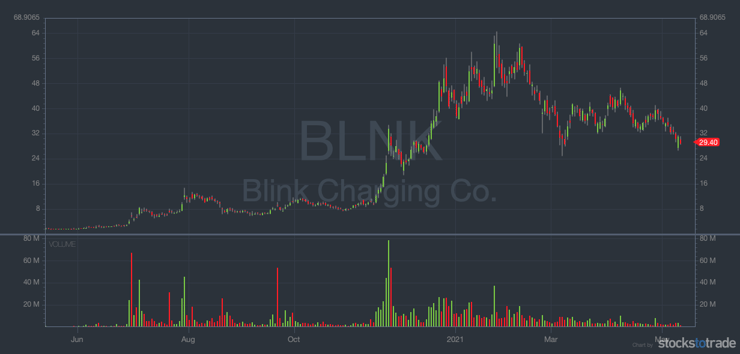
Workhorse Group Inc. (NASDAQ: WKHS)
WKHS has been down in the dumps since losing a big contract to another electric truck maker. It’s still just one piece of good news away from running.
Its short interest sits at 35%.

Frequently Asked Questions About Short Interest
Let’s line them up…
How Do You Track Short Interest?
Your trading platform should show short interest, along with other stock vitals.
How Do You Find Short Interest Data?
If you want more accurate data, some services add surveys to FINRA’s official tallies.
Which Stock Is the Most Shorted?
At the time of writing, the honor goes to PubMatic Inc (NASDAQ: PUBM). Short interest in this stock sits above 50%.
How Can You Tell if a Stock Is Being Shorted?
Firms are required to report their short sale volume, so you’ll always be able to tell.
Short Interest: The Bottom Line

©
Short interest has gotten a lot of play since GameStop went parabolic. But it isn’t a silver bullet for great trades.
In fact, it doesn’t tell you much about trading at all.
There’s a lot more that goes into making good trades. So start studying!
Short squeezes aren’t rare. It’s knowing what to do with them that’s the trick.
Do you like hunting shorts? Have you ever gotten caught in a short squeeze? Let me know in the comments — I love hearing from my readers!
Disclaimers
*These results are not typical. Individual results will vary. Most traders lose money. These top traders have the benefit of many years of hard work and dedication. Trading is inherently risky. Always do your due diligence and never risk more than you can afford to lose. I’ve also hired Jack and Kyle to help in my education business.
**Never attempt to copy or mirror the trades discussed on this website or in the Breakouts & Breakdowns alert service. Attempting to do so may result in substantial financial losses. Breakouts & Breakdowns alerts are not provided in real-time. For that reason, it is highly unlikely you will be able to buy the stocks at the same entry price, or sell the stocks at the same exit price, to achieve the same or similar profits obtained by the instructors.
***Tim Sykes has a minority ownership stake in StocksToTrade.com.

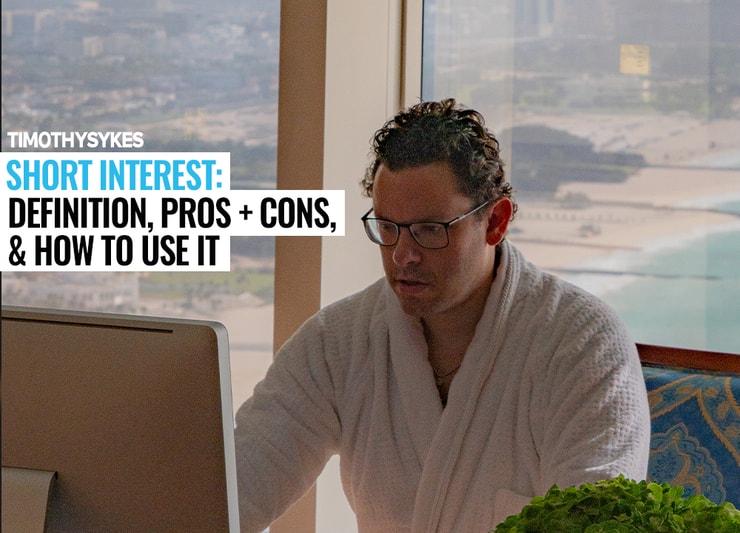

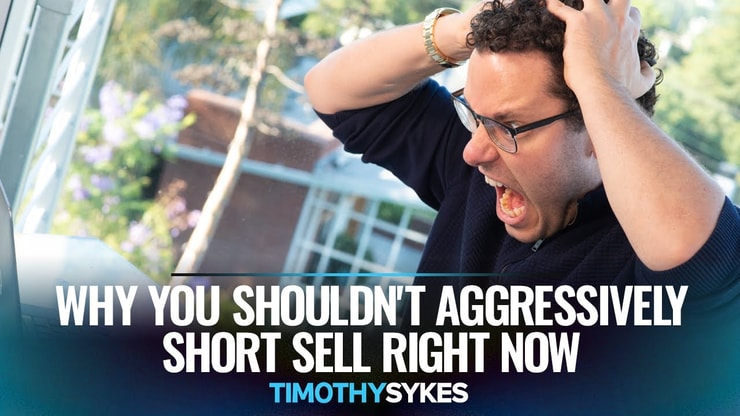


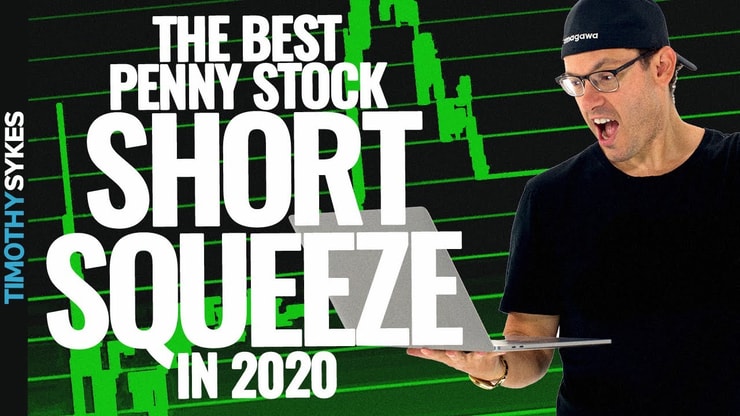

Leave a reply